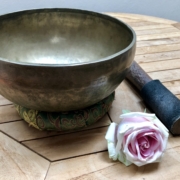 https://samahitaretreat.com/wp-content/uploads/2024/03/DJI_20231220135922_0003_D-scaled.jpg
1920
2560
Kirsten Mia
http://samahitaretreat.com/wp-content/uploads/2024/01/samahita-logo-v2.svg
Kirsten Mia2024-03-20 15:30:592024-03-20 15:30:59Travel, explore, be curious!
https://samahitaretreat.com/wp-content/uploads/2024/03/DJI_20231220135922_0003_D-scaled.jpg
1920
2560
Kirsten Mia
http://samahitaretreat.com/wp-content/uploads/2024/01/samahita-logo-v2.svg
Kirsten Mia2024-03-20 15:30:592024-03-20 15:30:59Travel, explore, be curious!5 Ways to Cultivate Sattva
According to Ayurveda, sattva is the quality of nature that contains balance, peace, harmony, purity and clarity. It is one of the three subtle qualities or ‘gunas’ that exist in all of nature. The other two qualities are rajas and tamas, rajas being the quality of movement, distraction, turbulence or activity that creates imbalance in life, while tamas being the quality of dullness, darkness, heaviness and stagnancy that creates inertia.
Sankhya, the philosophical base of Yoga and Ayurveda, states that everything in this life is composed of the three gunas, within and without us. We all have all three gunas within us in different proportions, according to our lifestyles and body types. On the extreme, a highly rajasic person shows up as always focused on doing, achieving and getting places, a lifestyle typical of modern fast-paced society which, over time, causes stress and burnout. On the other hand, a highly tamasic person is slow moving, heavy, lethargic and often depressed. Mental dullness and a lack of energy exist, due to a lifestyle of inertia, or from overdoing that results in exhaustion (too much rajas can also lead to tamas).
The predominant guna will depend on what we decide to cultivate daily through lifestyle and diet, along with our natural tendencies according to our own body type. Any imbalance or disease, according to Ayurveda, is a manifestation of too much rajas or too much tamas, therefore, if we want vibrant health, cultivating sattva is key.
5 simple ways to cultivate more sattva in daily life:
1. Nourishment:
The food that we eat is the biggest factor influencing which guna pervades in us. Sattvic foods are light, clean, organic, fresh, seasonal foods like vegetables, fruits, nuts, seeds and oils. Stimulating foods like spicy foods, alcohol and coffee are rajasic, while dense, heavy, stale foods and overeating will bring about tamas. If feeling stressed, anxious, or can’t sleep, be mindful of stimulating, rajasic foods and see what you can replace with sattvic options. For tamas eat lighter, sattvic foods and only what you need. Intermittant fasting can help overcome tamas induced by a sluggish digestion.
2. Physical activity:
It’s important to move the body daily, yet to what degree depends on the individual, it doesn’t necessarily need to be a two-hour workout every day. More cardio can be beneficial for stimulation and for moving out of tamas. While the energy of rajas can be directed in a beneficial way through physical movement as long as it is not overdone to the point of burnout. Yoga asana practice is by its nature a sattvic practice, if practiced mindfully. Yin or yoga nidra can help reduce rajas, while a more dynamic style can counteract tamas.
3. Work-life balance:
Finding a balance between work and life can be tricky for over-working, over-achieving, rajasic types. Creating time to enjoy life and to experience the beauty of the world though is vital to health and wellbeing. A sattvic lifestyle is certainly not all work and no play. At the same time, more physical activity can be beneficial for those used to sitting all day in front of a computer. Short high activity breaks or walks can make all the difference and help bring balance.
4. Spiritual practice:
Connecting to that which is greater than us can help us all cultivate a sense of peace, calm and clarity within, all qualities of sattva. The key is to find a practice that resonates, which doesn’t become another chore on the to-do list, but something that feels good and is sustainable. Pranayama or simple breath work is an effective way to calm the mind and bring it back to sense of peace, as can be any meditative practice including chanting, mindfulness or spending time in nature. Find what works for you and do it consistently with heart to experience benefit.
5. Attitude:
If there is one simple way to cultivate sattva it is to develop a sense of gratitude, a practice that takes a matter of minutes each day. A tamasic nature is one that is lacking in motivation, clarity and will, while a rajasic nature is lacking in focus with a constant desire for more. Gratitude for what we already have eradicates both lacking and the need for more, it both recognises our wealth and inspires compassion for others that suffer. A gratitude practice is powerful for helping tune in to the bigger picture and dropping the small stresses and desires, while inducing more lightness.
We aim for sattva to balance, harmonise ourselves with nature and to stay energised and healthy. A truly sattvic person has mental clarity, is pure in thoughts, words and actions, they don’t overwork or push in life, and they aren’t lazy or lethargic — they enjoy a balanced life. This can’t be forced. The key is little by little, cultivating sattva daily by what we eat, how we move, practice, think and speak, and over time this naturally results in the moving towards a life of more balance, peace, purity and clarity. Sattva is natural both in its essence and in its cultivation.
More from the Samahita Blog









